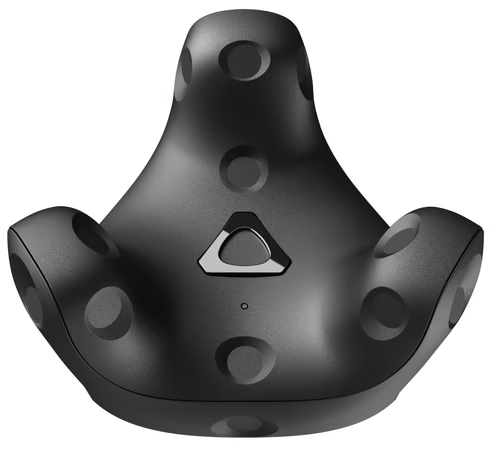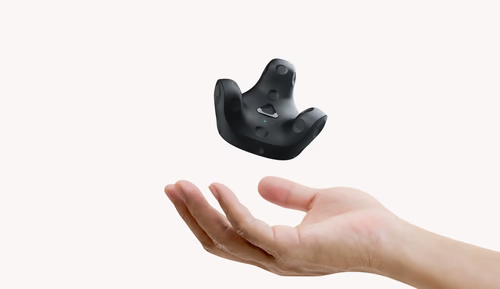Vive trackers
Check out: Vive trackers website
Also: https://bookstack.hku.nl/books/motion-capture-motion-tracking/chapter/vive-tracking
Track movement and bring objects from the real world into the virtual universe.
Connect to Vr,, Resonite, Touchdesigner,, Unity etc through Steam.
The Vive VR trackers function by using laser sweeps from base stations (vive Lighthouses) to detect their position and orientation in 3D space (approx 5x5 mtrs.) They provide highly accurate real-time tracking of body movements or objects, making them essential for immersive VR experiences, motion capture, and virtual production.
Vive VR Trackers are devices developed by HTC as part of their VR (virtual reality) ecosystem, designed to capture the precise movements of objects or body parts in a 3D space. These trackers allow for more immersive and interactive VR experiences by bringing real-world objects or additional body movements into the virtual environment. They are commonly used in VR gaming, simulations, and creative applications like motion capture and virtual production.
How Vive VR Trackers Work:
- Base Stations (Lighthouses): Vive trackers rely on base stations, also known as Lighthouse tracking systems, to function. These base stations emit laser sweeps across the room, creating an invisible grid of light that the trackers use to determine their position and orientation in 3D space. The base stations typically sit on opposite sides of the play area, providing full coverage.
- Sensors in the Trackers: The Vive trackers have built-in photo-sensors that detect the laser sweeps from the base stations. When the lasers pass over the tracker, the sensors detect the timing of the sweep. By comparing this timing across multiple sensors, the tracker can accurately calculate its position (location in space) and orientation (angle and direction it’s facing) within the virtual environment.
- Wireless Communication: The trackers communicate wirelessly with the VR system, transmitting their positional data back to the central processing unit (often the VR headset or a connected computer). This data is then used to place the object or body part being tracked into the virtual world with precise accuracy.
- Real-Time Positional Tracking: Once the position and orientation data are transmitted, the VR software interprets this information in real time, reflecting the movements of the trackers within the virtual environment. This allows users to see and interact with real-world objects (such as tools, props, or body parts) in the VR world.
Applications of Vive VR Trackers:
- Full-Body Tracking: Vive trackers can be attached to different parts of the body (such as feet, hips, or hands) to enable full-body tracking in VR. This creates a more immersive experience by allowing the VR system to replicate the user’s entire body movements in the virtual world. It's popular in VR fitness applications, dance simulations, and social VR platforms where users can see and interact with each other’s full body movements.
- Object Tracking: The trackers can be attached to physical objects (like a tennis racket, a gun, or a prop in a VR game). This allows users to manipulate real objects and see their counterparts in the virtual world, enhancing the realism and interactivity of the experience.
- Motion Capture: In VR-based motion capture setups, the Vive trackers can be placed on key points of a performer’s body, allowing for detailed recording of their movements. This data can be used to animate digital characters in real time for virtual production or performance capture in gaming and film.
- Mixed Reality (MR): In mixed reality setups, the Vive trackers allow users to integrate real-world objects into virtual experiences. For instance, a camera operator could use a tracked real-world camera to shoot within a virtual environment, creating a seamless blend of real and digital footage.
- VR Sports and Simulations: Vive trackers are used in simulations that require precise replication of physical movements, such as VR sports (e.g., baseball, boxing) or industrial training simulations, where users need to interact with virtual tools or equipment.
alternatives:
Vive Ultimate trackers
Fancy having a try at building your own tracker?
Check out this Teensy project or this Hivetracker

 .
. 